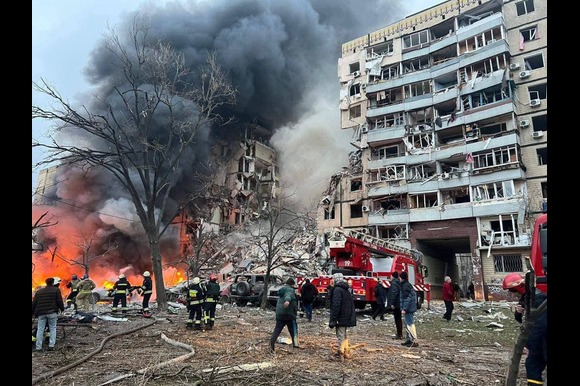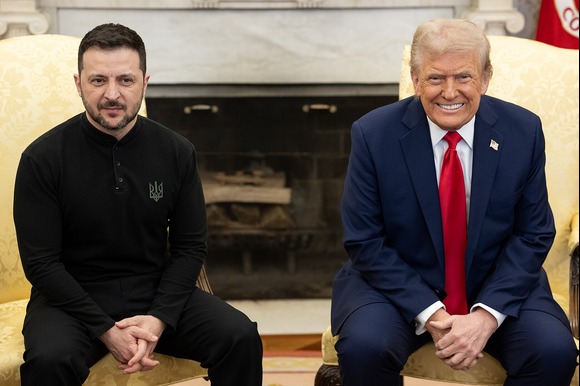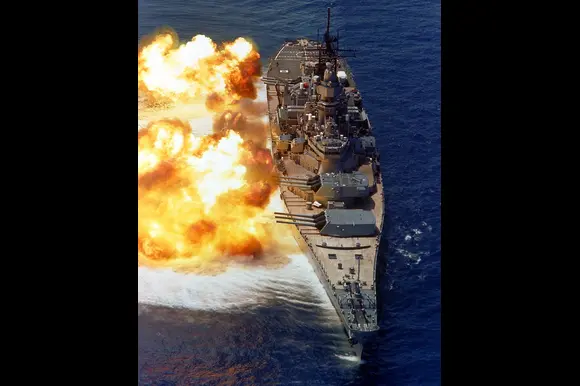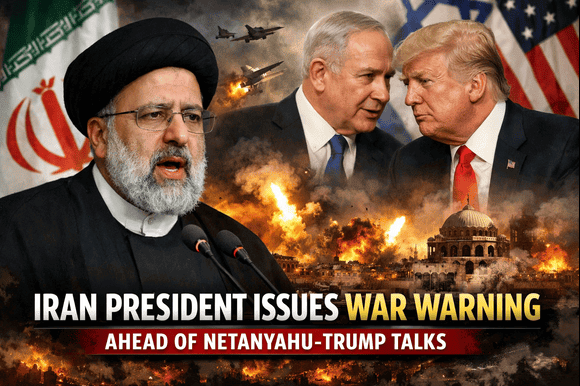
By Dsns.gov.ua, CC BY 4.0
Ukrainian President Volodymyr Zelensky has accused Russia of creating a façade of a ceasefire while continuing military operations in various regions of Ukraine.
During the initial six hours of the “Easter truce,” as mandated by Russian President Vladimir Putin, Zelensky reported 387 shelling incidents and 19 assaults by Russian forces, along with 290 drone deployments. Fortunately, there have been no reports of casualties.
Putin instructed his military to “cease all military activities” in Ukraine from 18:00 Moscow time (16:00 BST) on Saturday until midnight on Sunday, a directive that Kyiv also agreed to follow.
The Russian defense ministry claimed that all Russian troops were complying with the truce and accused the Ukrainian military of violating it. They reported that Ukrainian forces had fired upon Russian positions 444 times, conducted 900 drone strikes, and executed 12 shelling incidents, along with 33 UAV strikes and seven munitions drops. The ministry mentioned casualties among civilians but did not provide further details.
On Sunday morning, Zelensky stated that Moscow was “attempting to create a general perception of a ceasefire, yet in certain areas, it continues to make isolated attempts to advance and inflict damage on Ukraine.”
Pointing out specific military actions by Russia, Zelensky remarked that “our forces are responding appropriately to the enemy’s actions, depending on the specific combat circumstances.” Given that Putin’s ceasefire was announced just minutes before its implementation, an immediate and total halt was always improbable. However, reports from the BBC in Ukraine indicate that the front lines have experienced a relative quietness.
Before Zelensky’s comments regarding ongoing attacks in certain regions, there were no reported sightings of Russian drones or fighter jets in Ukrainian airspace at midnight on Saturday, which is quite unusual.
The only notable report was the deployment of a Russian vessel equipped with missile launchers in the Black Sea.
In the southern city of Odesa, an unusual quiet prevailed. On Friday, prior to Moscow’s declaration, air defense systems were active throughout the night as Russian drones approached from the occupied territory of Crimea.
Late on Saturday, during the early hours of the truce, President Zelensky remarked, “If Russia is genuinely prepared to engage in a complete and unconditional silence, Ukraine will respond in kind, reflecting Russia’s actions.”
“Our responses will be symmetrical. The proposal for a full and unconditional 30-day silence remains available — the response must come from Moscow,” he posted on X.
Zelensky indicated that Ukraine would be open to extending the truce beyond April 20, seemingly alluding to an earlier U.S. proposal for a 30-day ceasefire, which Ukraine had already accepted.
It appears that both Moscow and Kyiv are eager to demonstrate to Washington their commitment to peace. The pivotal question is whether the Kremlin will accept Zelensky’s proposal to extend the truce from 30 hours to 30 days, which is crucial for any potential peace negotiations.
However, few Ukrainians believe this is a realistic possibility.
Putin announced the temporary truce during a meeting with his chief of general staff, Valery Gerasimov.
“Based on humanitarian grounds… the Russian side declares an Easter truce. I order a halt to all military operations during this time,” Putin instructed Gerasimov.
“We expect Ukraine to follow our lead. At the same time, our forces must remain prepared to counter any potential violations of the truce and provocations from the enemy, as well as any aggressive actions.”
The Russian defense ministry stated that its troops would comply with the ceasefire as long as it was “mutually respected” by Ukraine.
This is not the first instance of a sudden announcement for a pause in hostilities; a previous ceasefire attempt during Orthodox Christmas in January 2023 collapsed when both sides failed to reach an agreement on the terms.
In response to Putin’s announcement of a truce, a spokesperson from the UK Foreign Office stated, “This is the time for Putin to genuinely demonstrate his commitment to peace by halting his devastating invasion and agreeing to a comprehensive ceasefire, as requested by the Ukrainian government—not merely a temporary pause for Easter.”
Russia initiated a full-scale invasion of Ukraine on February 24, 2022, resulting in an estimated death toll and injuries in the hundreds of thousands, predominantly among military personnel on all sides.
The United States has been engaging in direct discussions with Russia in an attempt to bring an end to the conflict, but significant advancements have proven elusive.
Last month, Moscow dismissed a proposal for a complete and unconditional ceasefire that had been reached between the US and Ukraine.
On Friday, US President Donald Trump cautioned that Washington would “take a pass” on facilitating further negotiations to resolve the war in Ukraine unless there was swift progress.
His remarks followed those of Secretary of State Marco Rubio, who indicated that the US would not “continue with this endeavor for weeks and months on end,” as it had “other priorities to address.”
“We need to quickly ascertain—within a matter of days—whether this is feasible,” he stated.
“If it is not going to materialize, we will simply move on.”




